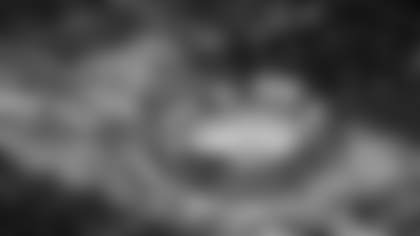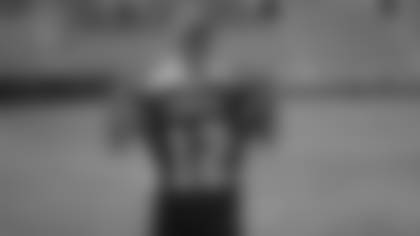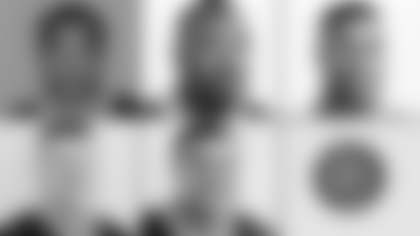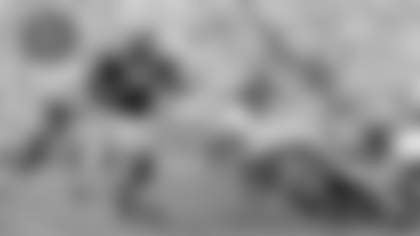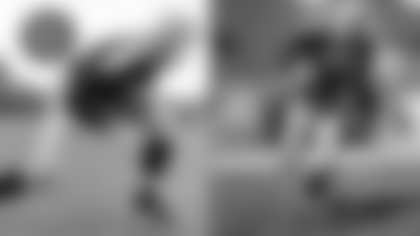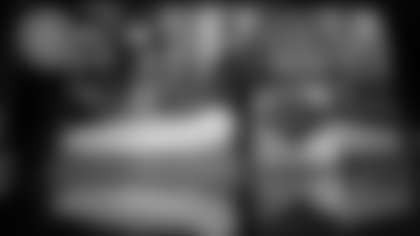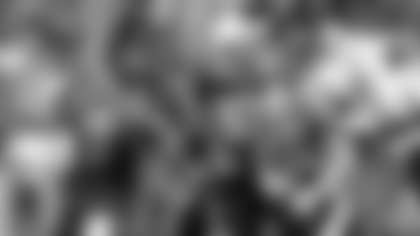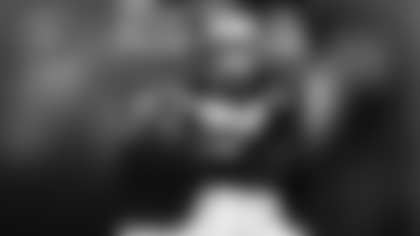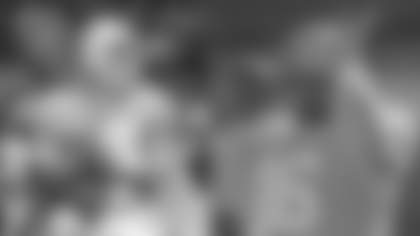Second in a seven-part series of "best of" drafts in Packers history.
During the final three years that head coach Lisle Blackbourn called the shots on draft day for the Green Bay Packers, he selected six players who were inducted into the Pro Football Hall of Fame.
It's a three-year total unmatched in NFL Draft history.
In 1956, Blackbourn chose tackle Forrest Gregg in the second round and quarterback Bart Starr in the 17th round. In 1957, he picked Notre Dame quarterback Paul Hornung with the bonus, or first overall, choice.
Three more inductees were products of Blackbourn's 1958 draft: Louisiana State fullback Jim Taylor was taken in the second round; Illinois fullback-linebacker Ray Nitschke in the third round; and Idaho guard Jerry Kramer in the fourth round.
Only once so far has a team selected more future Hall of Famers in a single draft. In 1974, Pittsburgh corralled four. Cleveland in 1957 and Dallas in 1964 matched the Packers' total with three each.
Thus, the '58 draft narrowly edges Blackbourn's '56 and '57 drafts as his best ever. In all, Blackbourn oversaw four complete drafts, from 1954-57, and the first four rounds in '58, which were held on Dec. 2, 1957.
Scooter McLean, Blackbourn's successor, was in charge for the last 26 rounds of the draft's second phase, conducted Jan. 28, 1958. McLean added one more blue-chipper to the Packers' haul that year, when he snared lineman Ken Gray of what was then Howard Payne College in the sixth round.
Here was what coaches and scouts had to say about the Packers' three future Hall of Famers selected that year. Keep in mind that was during the one-platoon era of college football, so players were forced to play both offense and defense.
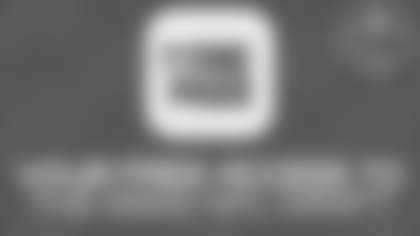
Fans can now register for free entry to the 2025 NFL Draft by downloading the NFL OnePass app or by registering online!
On Jim Taylor (6-0, 202)
Louisiana State assistant coach and former Packers end Abner Wimberly (Green Bay Packers Player Talent Report, March 27, 1957): "He was the leading scorer in the SEC last year. He will make a fine offensive halfback. … He is tough as hell."
Wimberly (Green Bay Packers Player Talent Report, Nov. 8, 1957): "Has fine speed for 50 yards – 5.5. He runs the 100 in 10. He has very fine hands and is a good short pass receiver. He is lazy in his blocking but could be a good one. Very sound of body and legs and has never been hurt. … He is the type who will make a better pro than college player. …He is the type that will play as long as he can. Not too smart."
Lisle Blackbourn (Green Bay Press-Gazette, Jan. 29, 1978): "Taylor's record wasn't that exceptional, but (Jack) Vainisi was the guy who brought his name in at the top of the list. (Taylor) was tough and that's what we wanted. We needed more backbone.".
On Ray Nitschke (6-2, 215)
Vainisi, the Packers' talent scout at the time (Green Bay Packers Player Talent Report, Nov. 13, 1957): "I consider him the best prospect for pro ball on the Illinois squad. Not too fast for offensive ball. Real Tough – Mean Player. Good Linebacker. This is the type of player we are looking for in pro ball. Good blocker."
Illinois assistant coach Chuck Boerio (Green Bay Packers Talent Report, Nov. 16, 1957): "Ray hasn't had a particularly good season thus far but has picked up considerably the last two ballgames. He would make a fine pro football player. He is a rugged back-alley type of football player. He has good speed and is a rugged tackler. On offense he is a real fine runner and an average blocker. … I definitely believe he will be an asset, especially with the two-platoon system. His main problem right now is playing both ways and being inhibited with so many assignments that he is not reacting as well as he is capable of. This kid will make you a big, mean LB."
Blackbourn (Press-Gazette, Dec. 3, 1957): "He's also a possibility as a defensive end, but he's a bit slow for offense."
On Jerry Kramer (6-3, 221)
Idaho coach Skip Stahley (Green Bay Packers Player Talent Report, Nov. 7, 1957): "Good overall speed and mobility. Has great potential. Kicks off, extra points, field goals from college 25-yard line."
UCLA assistant coach Johnny Johnson (Green Bay Packers Player Talent Report, Nov. 29, 1957): "Kramer is a good prospect as an interior lineman. He is strong and tough, and he should get a lot larger than he is now. He is a good offensive blocker."
Blackbourn (Press-Gazette, Dec. 3, 1957): "(Former Packers assistant) Earl (Klapstein) tells us that (Kramer will) fill out like Gregg. Kramer weighs almost 230 now and should go up to 245 with little trouble. … Gregg came here at 235 and grew to 250 with no slow up."
No. 1 pick Dan Currie was on track to maybe be the best of the bunch
Dan Currie, a college center and linebacker, was the Packers' first-round pick and the third overall selection. Blackbourn chose him over Michigan State teammate, power-running right halfback Walt Kowalczyk, who was being projected as a fullback in the pros.
Why Currie (6-3, 235) over Kowalczyk? Blackbourn had two ready answers.
Blackbourn on Currie (Milwaukee Sentinel, Dec. 3, 1957): "This is the kind of lineman you always hope to get. He's the pro type – and he wants to play. We'll probably use him as a defensive linebacker. But then, too, he's a dandy replacement for our offensive center, Jim Ringo."
Blackbourn on Kowalczyk (Milwaukee Sentinel, Dec. 3, 1957): "Many a good college boy isn't a good pro candidate. I saw Kowalczyk when I coached Marquette. He's a good runner but not a fast starter – a necessity in this league."
University of Miami and future College Football Hall of Fame coach Andy Gustafson after observing Currie in preparation for the North-South Shrine Game played on Christmas night at the Orange Bowl (Miami Herald, Dec. 21, 1957): "Until I saw Currie, I thought (former UCLA standout) Donn Moomaw was the greatest linebacker we ever had in the Shrine game. But I think Currie is Moomaw's equal – may even surpass him."
Blackbourn proved to be right. Kowalczyk (6-0, 208) was drafted by Philadelphia three choices after Currie and rushed for a mere 236 yards in his three NFL seasons. Currie, on the other hand, had the best rookie year of any of the players from the Packers' 1958 draft.
Milwaukee Sentinel sportswriter Bud Lea on Lombardi's talk at a Milwaukee Association of Commerce luncheon (Milwaukee Sentinel, May 5, 1959): "Lombardi is ready to spring another trade. He mentioned no names but said he still needed help and would do his darndest to get it. The Packer boss then listed three untouchables. They were safetyman Bobby Dillon, center Jim Ringo and linebacker Dan Currie."
Prior to his trip to Milwaukee, Lombardi had spent an exhaustive three months evaluating every player who was part of the worst team in Packers history. Based on that film study, Lombardi determined the above three players were his only keepers.
The Pro Football Hall of Fame wouldn't open until 1963, but four years into their careers, Currie was the linebacker who had greatness stamped all over him, while Nitschke still hadn't gained a foothold as a starter.
Two weeks before the Packers won their first NFL title under Lombardi, Currie's photo adorned the cover of the Dec. 18, 1961, Sports Illustrated. The subtitle of the story was: "Their great corner linebackers, Dan Currie and Bill Forester, have made the Packers a hard team to beat. The two practice one of the least-known but most important arts in football."
Meanwhile, Nitschke had lost his starting job again to Tom Bettis, whom he had played behind in 1959 and for most of the 1960 season. In fact, Bettis started the 1961 NFL Championship Game, played in Green Bay against the New York Giants and won by the Packers, 37-0. Moments after it, Bettis was the linebacker carried off the field by joyous fans.
In 1963, Currie was named to the Newspaper Enterprise Association all-pro team for the third straight year. Selected by a league-wide vote of players, the NEA team was the most prestigious at the time, at least in the eyes of most NFL players and insiders. However, in the ninth game of the 1962 season, Currie had been blindsided by receiver Tommy McDonald and suffered an injury to his left knee.
After missing only two games, Currie stood out when the Packers beat the Giants, 16-7, in a brutal defensive battle to repeat as NFL champions. Nitschke was named the game's MVP, but Currie might have been just as deserving, intercepting a pass, almost picking off another and causing a fumble.
Thereafter, he never played to that level again, even in his final all-pro season. At the end of the 1964 season, Currie was traded to the Los Angeles Rams, where he played just two more years.
Halfback Dick Christy (5-10, 190) of North Carolina State was the fifth player the Packers drafted in the first phase that year. An Associated Press All-America selection as a senior – making the team ahead of Taylor – he was the Packers' third overall pick.
However, Christy was traded to Pittsburgh at the end of training camp for a fifth-round draft choice. He played one year with the Steelers and four in the upstart American Football League.
Blackbourn (Press-Gazette, Dec. 3, 1957): "Christy is like that Billy Barnes who is doing so well with the Eagles. He's a rabbit type but heavy enough at 190 and he'll hit hard."
McLean had Gray (6-2, 235) double as a defensive tackle and offensive guard during training camp. That put Gray in competition with Kramer for a roster spot and the former lost out on the final cutdown date.
Signed by the St. Louis Cardinals after being waived, Gray played 12 seasons for them and was a six-time Pro Bowl guard, which was double the number of times that Kramer was selected during his 11 seasons with the Packers.
Former Packers great and future Pro Football Hall of Famer Mike Michalske on Gray (Green Bay Packers Player Talent Report, Nov. 26, 1957): "Average speed. Aggressive. Young. Tough. Desire. Willing. Wants to play very much."
Sam Houston State head coach Paul "Red" Pierce on Gray (Green Bay Packers Player Talent Report, Jan. 23, 1958): "More hustle and desire than any boy in Texas. Will break someone in half."
Jack Vainisi: A one-man personnel department
During Blackbourn's five drafts, the Packers' personnel department consisted of one fulltime employee.
Vainisi, officially listed as an administrative assistant and talent scout in the team's annual Press, Radio and TV Guide, was responsible for gathering scouting reports on all of the available prospects each year and organizing the information in such a way that Blackbourn was prepared for the early rounds of the draft. At the time, those rounds were conducted before the final two regular-season games. Hence, Blackbourn needed to lean heavily on Vainisi's advice.
Verne Lewellen was general manager of the Packers throughout Blackbourn's tenure, but as one of the team's all-time greats and star of their three-peat champs from 1929-31, he was hired for a more important task: Sell city leaders and the general public on the dire need for Green Bay to build a new stadium to save its franchise.
Art Daley, sports editor and longtime Packers beat writer for the Press-Gazette, was allowed to sit in on those drafts like other newsmen and subsequently explained how the Packers' draft preparation worked once the season ended and prior to the final 26 rounds.
Blackbourn, according to Daley, headed to Florida five days after the 1957 season ended to scout, including practice sessions, the North-South Shrine Game, the Orange Bowl and the Senior Bowl.
Cerritos Junior College head coach Earl Klapstein, who scouted the West Coast for the Packers on a part-time basis, was assigned to the Rose Bowl and East-West Shrine Game. Klapstein had served as a part-time assistant coach for the Packers in 1956.
Veteran players Bobby Dillon and Stretch Elliott scouted the Cotton Bowl and Sun Bowl, respectively. Backfield coach Jack Morton scouted the Blue-Gray game.
Vainisi, according to Daley, was responsible for "compiling the data" collected from those scouting reports.
That's not to say Vainisi did no scouting. He lettered as a freshman tackle at Notre Dame in 1945 and had an eye for talent. But he spent more time in the office than visiting college campuses in preparing for the draft.
One of Vainisi's annual assignments was to sign the Packers' draft picks as soon as possible to thwart off any offers they might receive from Canadian Football League teams. So when the first four rounds ended in Philadelphia, Vainisi hit the road to get signatures on contracts for Currie, Nitschke, Taylor and Christy.
Occasionally, Vainisi's signing tours following the later rounds of the draft in January allowed him to catch spring practices at certain schools and begin work on the next draft.
Last call for Blackbourn
In a cruel twist of fate, 35 days after drafting three future Hall of Famers, Blackbourn was in Mobile, Ala., when he received a telephone call from executive committee member and team attorney Fred Trowbridge telling him he was fired. Blackbourn was there to get a sneak preview of his top five draft picks, all of whom had been selected to play in the Senior Bowl: Currie, Taylor, Christy, Nitschke and Kramer.
Scooter McLean was named to replace Blackbourn, and he immediately left Green Bay and headed to Mobile so he could scout the Senior Bowl. McLean lasted one season as coach. Following a 1-10-1 finish, he was replaced by Vince Lombardi.
In 1964, Lombardi rehired Blackbourn as a scout. Blackbourn continued working for the Packers in that capacity for another 10 years.
